Archaeology & History
Has the Final Resting Place of the First Roman Emperor Finally Been Found?
After a decades-long search, a team from the University Tokyo think they have found the emperor's lost villa.
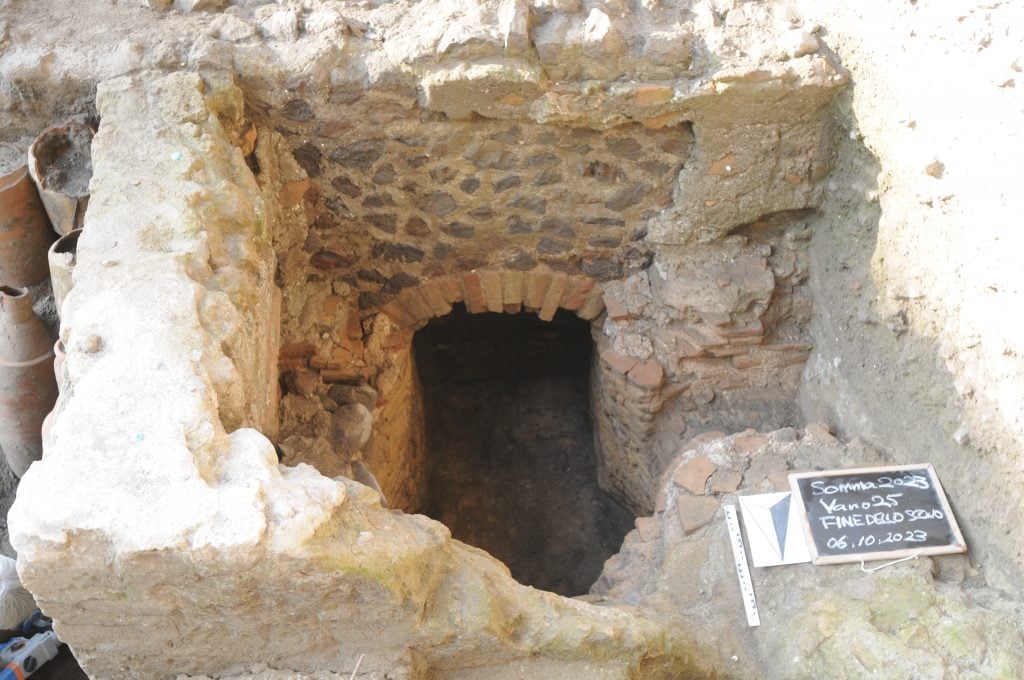
Archaeologists have already located places where Augustus partied, but a new lead has emerged in the century-long search for the villa where Ancient Rome’s first emperor passed away.
Since 2002, the University of Tokyo has led excavations at Somma Vesuviana outside of Naples, where Roman elites once vacationed. There, researchers overseen by professor of Italian studies Mariko Muramatsu are excavating and conserving artifacts, reassembling the area’s tangled social and geological history, and keeping their eyes out for the villa where Augustus died of illness in his mid 70s. Tacitus and Suentonious wrote that the villa was later turned into a temple for the imperial cult, and sat somewhere northeast of Mount Vesuvius.
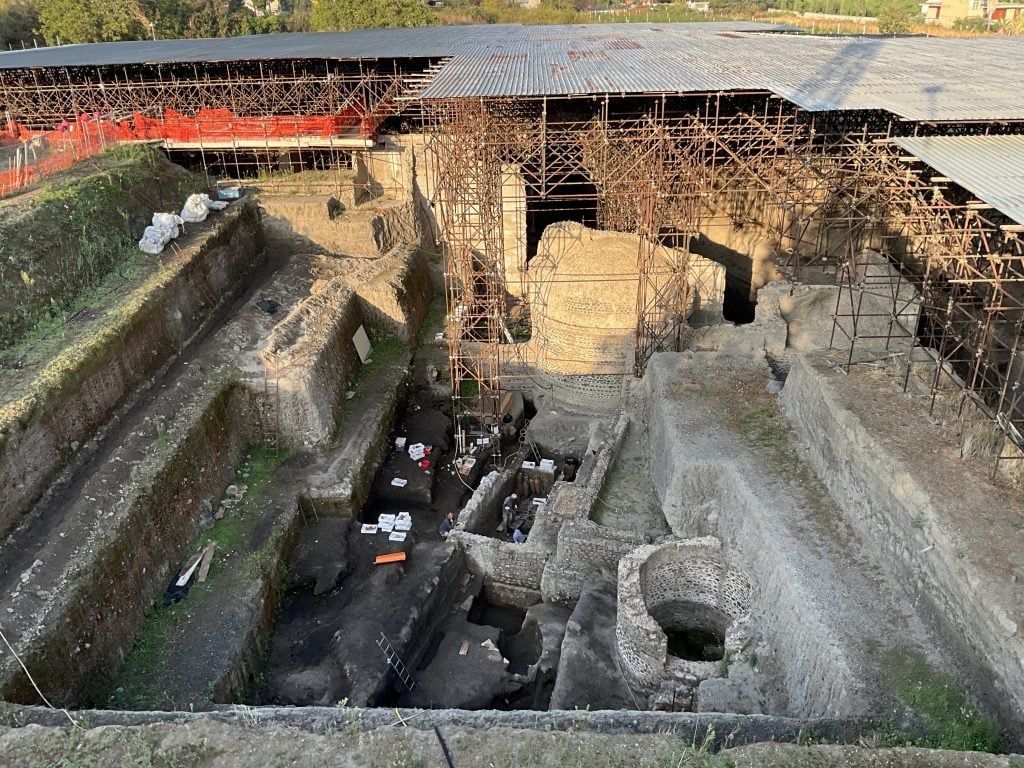
Overview of the excavation site. Photo: © 2024 IAGS (Mediterranean), University of Tokyo, Komaba.
There have been several false positives in UTokyo’s two decade search for Augustus’s villa, but just last week, the team announced a promising new lead they found buried beneath a grandiose villa that was once suspected to be the coveted site itself. Empirical observations including radiocarbon dating and material analyses confirm that a second, deeper site was buried by the same volcanic ash from the eruption of Mount Vesuvius in 79 A.D. that destroyed more famous archaeological treasures like Pompeii on the summit’s south side. In fact, the building on top used materials from the original site that were left poking above ground.
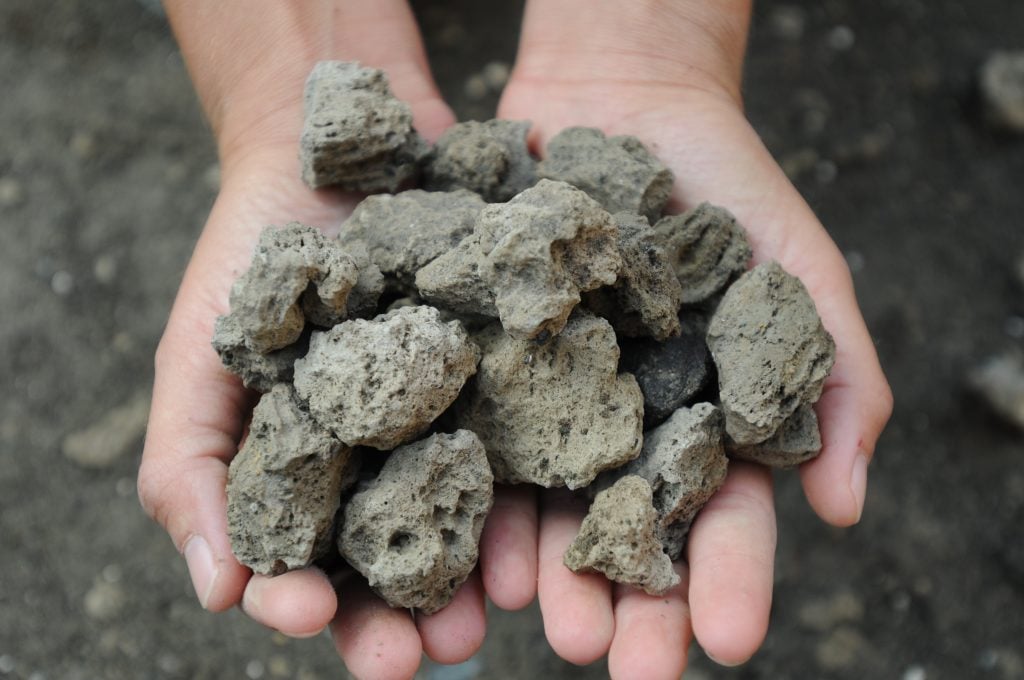
Pumice found on the site. Photo: © 2024 IAGS (Mediterranean), University of Tokyo, Komaba.
Agricultural workers first stumbled upon the archaeological remains on Mount Vesuvius’s overlooked north side during the 1890s. Excavations began in 1929, then halted for decades due to politics, despite the complex’s opulence. Given its ornate columns and statuary fragments, archaeologists surmised it was Augustus’s villa. However, when research picked back up, it turned out that the structure dated to the second century, long after the emperor’s death in 14 C.E.
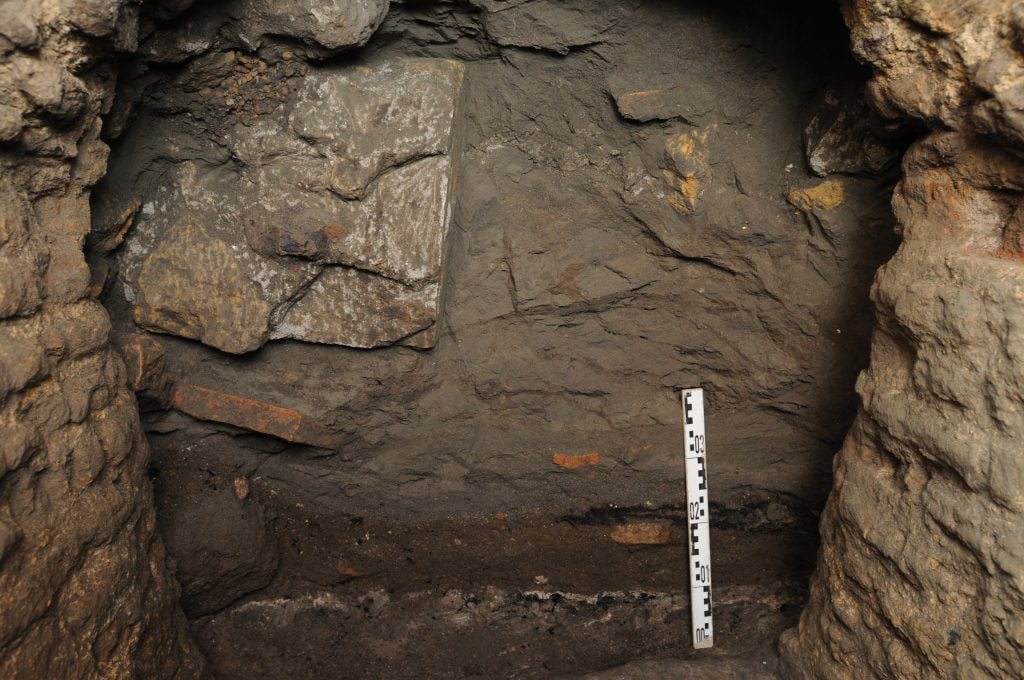
Cross section of the soil layer inside the kiln. Photo: © 2024 IAGS (Mediterranean), University of Tokyo, Komaba.
Alongside their quantitative data on the new site buried just beneath, researchers observed remnants of a furnace likely used to heat a private bath—precisely the kind of amenity Augustus would have had. Carbon dating on matter left in the furnace showed it hadn’t been used since the era of Augustus’s death. The team also found a warehouse lined with shelves of ceramic amphora vessels, corroborating the temple function Augustus’s villa later served.
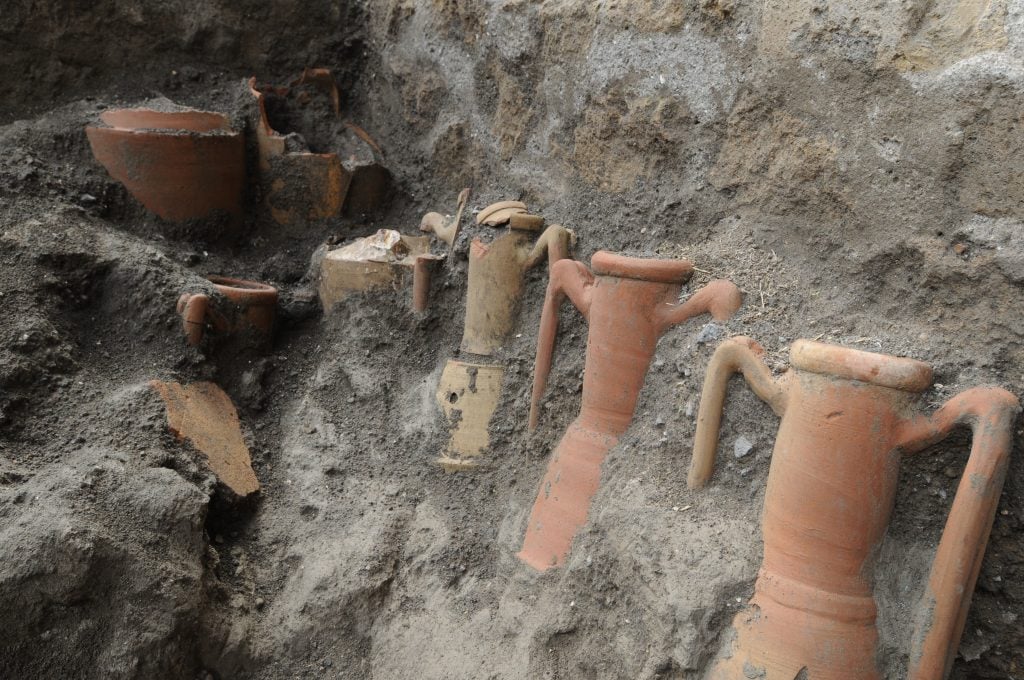
Amphora vessels excavated at the site. Photo: © 2024 IAGS (Mediterranean), University of Tokyo, Komaba.
The more researchers study this site, the more light they shed on what’s sometimes called “the dark side of Vesuvius.” The newer structure was built sooner than they would have projected. The reused architectural elements paint a human picture of how that reconstruction went, and the amount of volcanic pumice covering the more subterranean site upends previous thinking that the impact of the 79 A.D. eruption was not so dire on the mountain’s north side.
The team notes that these insights “will provide a clue to solving the problem of coexistence between natural disasters and humans in the modern era where large-scale natural disasters occur frequently.”
No one is more thrilled than Somma Vesuviana’s mayor, who hopes to welcome archaeology loving tourists soon. “We are one step away from history,” he told Napoli Today. “We hope to open the Villa Augustus at least every first Sunday of the month, every month.”





